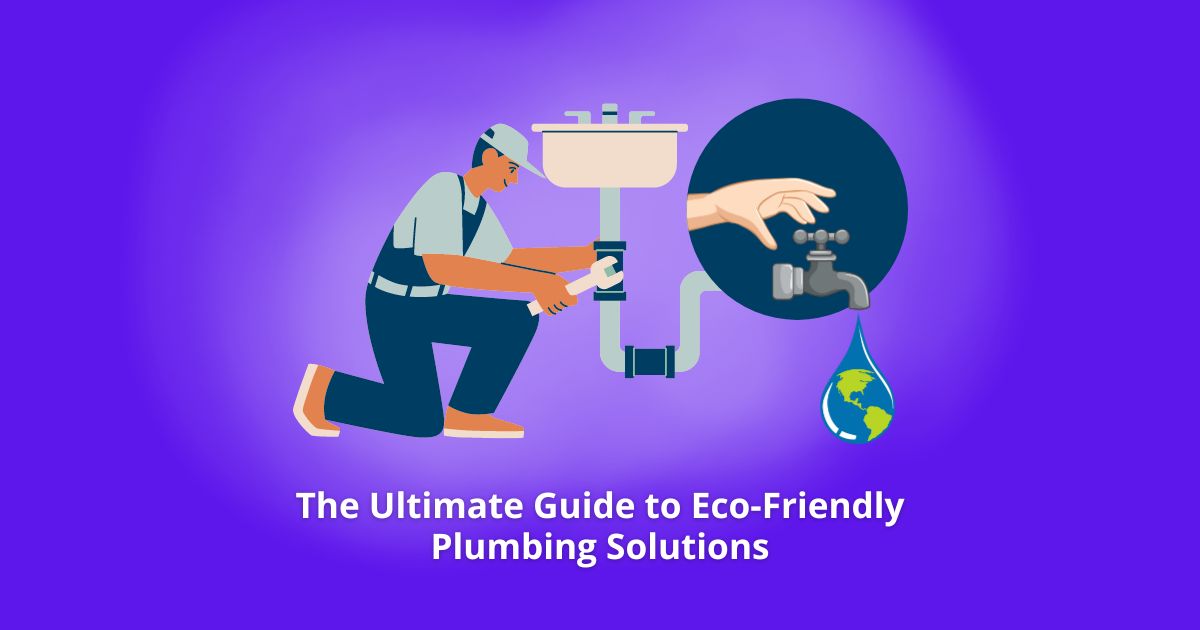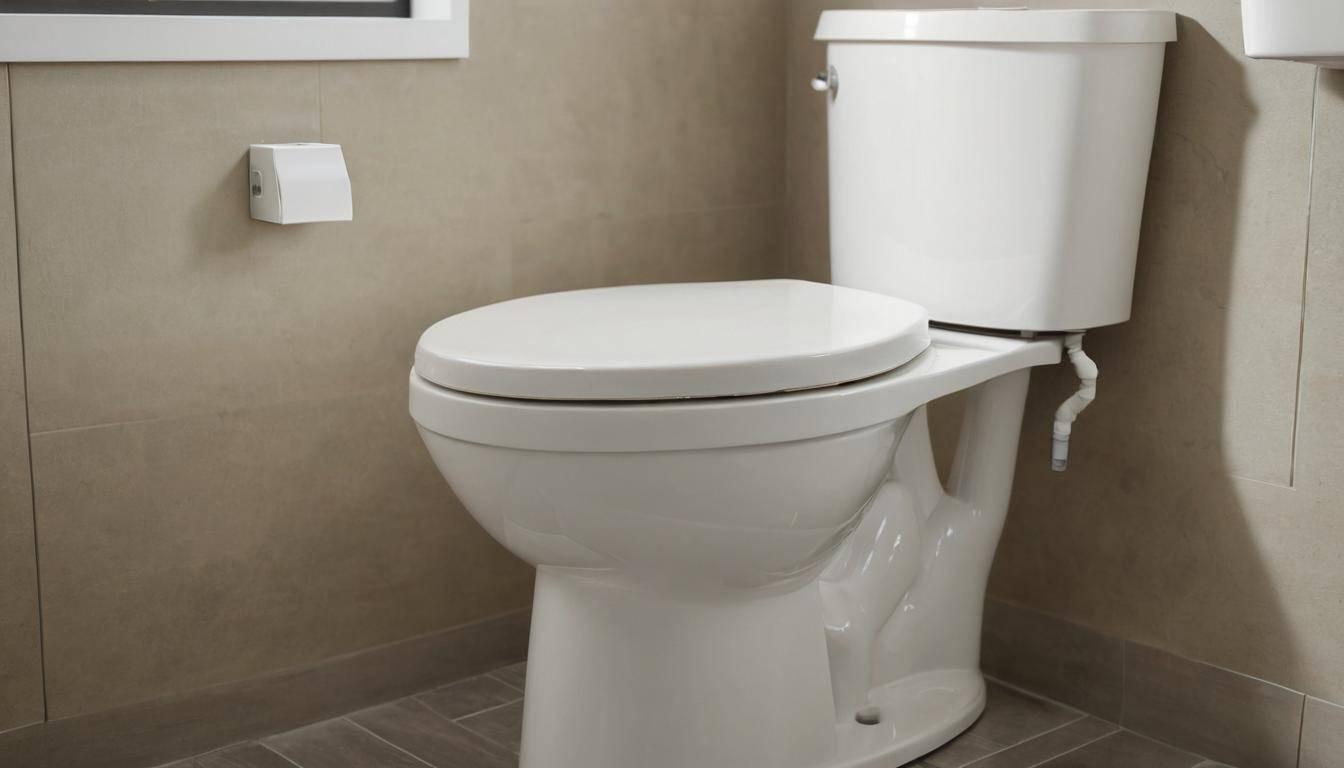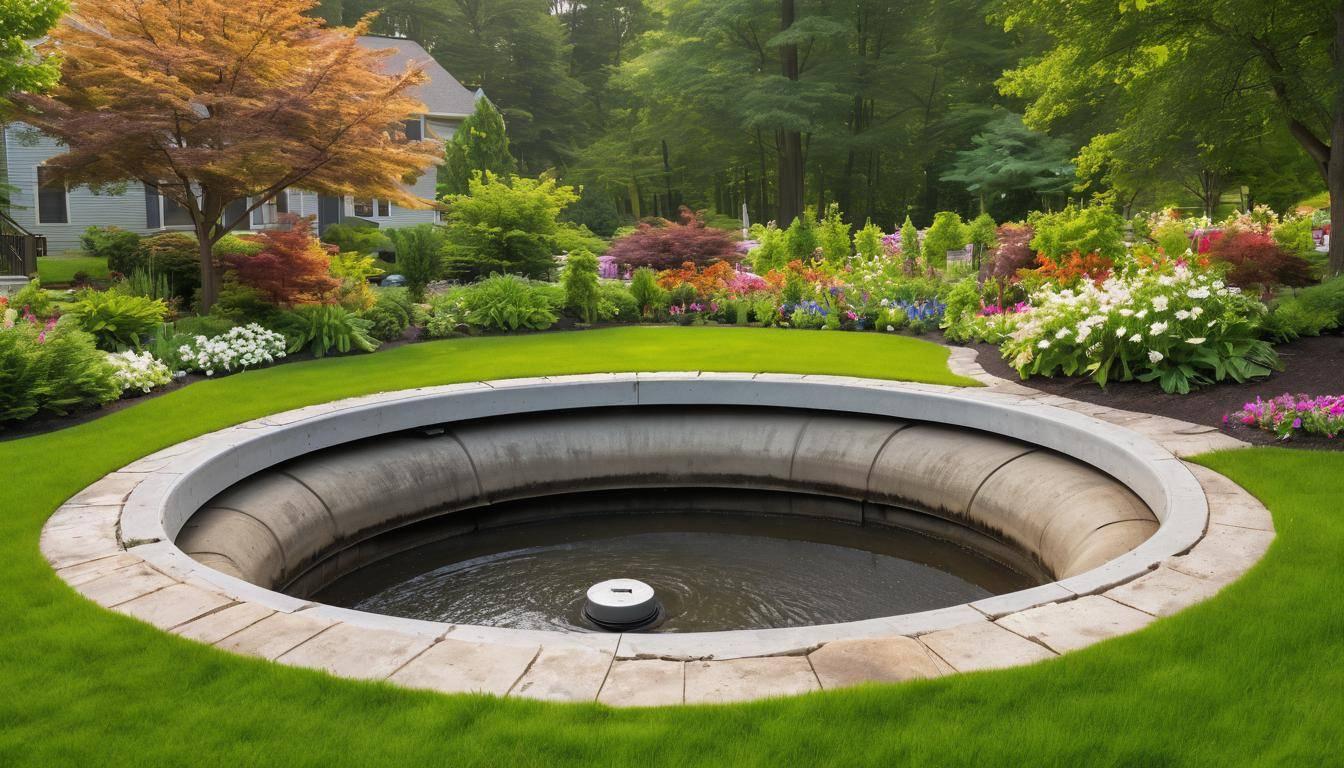Did you know that updating your home with eco-friendly plumbing solutions can significantly lower your water bills while benefiting the environment? Standard fixtures often lead to excessive water use and higher energy consumption. Transitioning to greener alternatives, like low-flow faucets and tankless water heaters, can make a substantial difference.

In this exhaustive guide, we’ve gathered practical, wallet-friendly tips designed specifically for those ready to make smart changes without the fear of wasting money on ineffective upgrades. As you explore innovative water-saving systems and discover possible rebates for green installations, you’ll find ways to transform your older plumbing infrastructure into an efficient powerhouse effortlessly. Dive deeper into these game-changing, eco-conscious updates that could redefine your home’s sustainability footprint.
Eco-friendly plumbing solutions include low-flow faucets and showerheads, dual-flush toilets, and tankless water heaters. These options can help reduce water consumption and energy usage in your home while also saving you money on utility bills.
Best Eco-Friendly Plumbing Solutions
When it comes to making eco-friendly choices for your plumbing, low-flow fixtures are a fantastic place to start. These fixtures are designed to use significantly less water than traditional ones, without sacrificing performance. Let’s break it down:
➜ Low-Flow Fixtures
Low-flow faucets, showerheads, and toilets have been engineered to conserve water while delivering the same level of performance as their traditional counterparts. For instance, a standard showerhead uses 2.5 gallons of water per minute (GPM), whereas a low-flow showerhead can use as little as 1.5 GPM, saving up to 40% of water in just one shower. It’s like enjoying the same experience with less impact on the environment – and your water bill!
The efficiency of low-flow fixtures doesn’t end there. Low-flow faucets operate at lower pressure, which reduces water consumption without compromising functionality. In addition, modern low-flow toilets use advanced flushing mechanisms that effectively clear waste using less water per flush. The impact of these fixtures translates to substantial long-term savings on both your water and energy bills.
➜ Tankless Water Heaters
Tankless water heaters present another impressive option for eco-friendly plumbing solutions. Unlike traditional tank-based systems that continuously heat and reheat a reservoir of water, tankless heaters only heat water when it’s needed, eliminating the wasteful energy consumption associated with maintaining a hot water supply.
According to the U.S. Department of Energy, tankless heaters can be 24%-34% more energy-efficient than traditional tank-type water heaters. They can ultimately lead to reduced energy costs and a lower overall environmental impact due to their on-demand heating approach.
➜ Greywater Recycling Systems
This innovative system captures wastewater from sinks, showers, and laundry, then processes and repurposes it for secondary uses such as irrigation or toilet flushing. By recycling greywater, homeowners can effectively reduce freshwater consumption and cut down on water waste.
Implementing a greywater recycling system not only conserves freshwater resources but also addresses the growing demand for sustainable practices. It offers a practical solution for reducing reliance on potable water sources while contributing to overall water conservation efforts.
By integrating these eco-friendly plumbing solutions into your home, you can significantly decrease your environmental footprint while enjoying tangible benefits such as reduced utility bills and an increased sense of environmental responsibility.
Having explored the significant impact of eco-friendly plumbing solutions, let’s now turn our attention to cutting-edge innovations in water-saving systems that are redefining sustainable living. and if you’re looking for plumbing fittings items must check out rs components online.
Innovative Water-Saving Systems
Water conservation plays a crucial role in helping us maintain a sustainable future. Many modern systems and appliances are designed specifically to minimize water wastage without sacrificing functionality. One impressive example is the emergence of smart irrigation controllers, which have revolutionized the way we manage outdoor water consumption.
Smart irrigation controllers are designed to optimize outdoor watering by adjusting schedules based on real-time weather conditions, soil moisture levels, and the specific needs of individual plants. This technological marvel ensures that unnecessary water wastage is avoided, making outdoor watering more efficient.
For instance, if there has been consistent rainfall in your area, the smart irrigation controller will recognize that the plants don’t need as much water and will adjust the watering schedule accordingly. Research has shown that smart irrigation controllers can reduce outdoor water use by up to 30%, making them a valuable addition to any environmentally conscious household.
➜ Dual Flush Toilets: Redefining Efficiency
Dual flush toilets are another innovation in water-saving technology that deserves attention. The concept behind these toilets is simple yet highly effective—providing users with two flush options: a half-flush for liquid waste and a full-flush for solid waste. By offering this choice, dual flush toilets empower individuals to use only the amount of water necessary for each type of waste, rather than relying on a single, fixed-volume flush.
This innovation results in significant water savings, with some studies indicating that dual flush toilets can reduce water usage by up to 67% compared to traditional toilets. By giving individuals the power to choose how much water they need for different scenarios, dual flush toilets exemplify the marriage of practicality and sustainability.
These innovative water-saving systems demonstrate how advanced technology can be harnessed to prioritize conservation without compromising functionality or convenience. As we continue to explore more solutions in this realm, it becomes increasingly evident that sustainable living can be seamlessly integrated into our daily lives through thoughtful design and forward-thinking engineering.
To further our journey in creating eco-friendly homes and lifestyles, let’s now turn our attention to exploring practical strategies for reducing water wastage at home.
Reducing Water Waste at Home

Reducing your water consumption at home isn’t just about lowering utility bills; it’s an essential step in preserving this precious resource for future generations. Let’s explore practical steps that each household can take to minimize water wastage.
Detecting and Fixing Leaks
Leaky plumbing fixtures are silent culprits that can significantly increase your water usage without you even realizing it. Did you know that a faucet dripping just one drop per second can waste more than 3,000 gallons of water in a year? It’s like throwing money down the drain, quite literally. To combat this, it’s crucial to conduct regular checks for leaks in faucets, pipes, and toilets. Addressing leaks promptly not only saves water but also prevents potential water damage to your home. Keep an eye out for damp spots, mold growth, or an unexplained increase in your water bill – these could be signs of a hidden leak that needs attention.
The key here is vigilance—small leaks may start subtly, but the amount of water wasted can add up to a staggering sum over time. By identifying and fixing these leaks early on, you’re not only safeguarding your wallet but also contributing towards conservation efforts.
➜ Using Water-Efficient Appliances
Investing in high-efficiency appliances may seem like an initial expense, but the long-term benefits they offer make them a wise choice. When it comes to washing machines and dishwashers, opt for Energy Star certified models which are designed to use 20%-50% less water compared to their non-certified counterparts. These appliances not only help conserve water but also have the added advantage of reducing energy usage, thus lowering utility bills while lessening your environmental footprint.
Additionally, consider exploring the option of retrofitting your existing appliances with aerators and low-flow fixtures. These simple installations maximize water efficiency without compromising performance, thereby minimizing wastage within your household.
By engaging in these everyday practices, you’re making a significant contribution to both conserving this vital resource and maintaining a sustainable home environment for the future. Every drop saved at home counts towards a greater cause, ultimately working towards creating a brighter and more responsible future for generations to come.
As we continue our journey towards sustainable living, let’s now turn our attention to the financial benefits of embracing green plumbing solutions.
Financial Benefits of Green Plumbing
When we talk about green plumbing, the environment is often the first thing that comes to mind. But here’s a sweet deal – it also brings significant financial advantages. So, let’s explore some of these perks because who doesn’t love saving money?
➜ Lower Utility Bills
Making changes to your plumbing, such as installing low-flow fixtures or water-efficient appliances, can lead to substantial savings on your utility bills. For example, a low-flow showerhead used by a family of four can save up to $290 annually on water heating costs. That’s money that could be redirected to something else, and wouldn’t we all like to have a little extra cash in our pockets?
A small change can end up making a big difference.
➜ Potential Tax Rebates
In addition to savings on utility bills, embracing eco-friendly plumbing can lead to additional financial incentives through tax rebates. Many areas offer tax rebates for homeowners who install water-efficient fixtures and systems in their homes. It’s worth taking the time to check local and federal programs for potential savings as they might be waiting right at your fingertips.
It’s like getting rewarded for doing something good for the environment!
The financial benefits of green plumbing are clear. The initial investment in water-saving fixtures and systems might seem like a cost upfront, but the long-term returns in terms of savings on utility bills and potential tax incentives make it an economically sound choice.
It’s evident that not only are you helping the environment by embracing eco-friendly plumbing solutions, but you’re also giving your bank account a break too. Who wouldn’t want to have a little more flexibility in their pocket while being environmentally responsible at the same time?
With the financial benefits of eco-friendly plumbing in mind, let’s now shift our focus to another aspect of sustainable practices in plumbing—using recycled materials.
Using Recycled Plumbing Materials
When it comes to eco-friendly plumbing solutions, one of the most impactful steps you can take is to utilize recycled plumbing materials. This not only helps in minimizing the depletion of natural resources but also reduces energy consumption in manufacturing processes. Let’s take a closer look at a couple of key recycled plumbing materials and their benefits.
➜ Recycled Copper Piping
Recycling copper to create plumbing pipes offers significant environmental benefits. By using recycled copper, we can lower the demand for virgin copper, ultimately conserving natural resources and reducing environmental damage caused by mining activities. Moreover, the process of recycling copper requires considerably less energy compared to mining and refining new copper, making it an energy-efficient choice. The best part is that recycled copper pipes are just as durable and efficient as their newly manufactured counterparts, meaning you’re not sacrificing quality for sustainability.
Aside from its environmental advantages, using recycled copper piping can also contribute to cost savings in the long run. The durable nature of copper ensures that these pipes have a significantly longer lifespan, thereby reducing the need for frequent replacements. Decreased maintenance and replacement requirements make it a compelling choice from a financial standpoint as well.
➜ Reclaimed Water Fixtures
Incorporating fixtures made from reclaimed materials into your plumbing setup offers a dual benefit. Not only do they add a unique and aesthetically appealing touch to your home, but they also play a vital role in promoting sustainability and reducing landfill waste. For instance, sinks or countertops made from recycled glass not only showcase innovative design but also serve as a tangible example of repurposing waste materials.
Furthermore, choosing reclaimed water fixtures aligns with the principles of circular economy, whereby materials are kept in use for as long as possible, thus preventing them from ending up in landfills prematurely. By embracing such fixtures, you’re contributing to the conservation of natural resources and minimizing the environmental impact associated with material disposal.
Imagine having a beautifully designed sink in your bathroom that not only adds character to your space but also serves as a statement piece in support of sustainable living. It’s these small yet impactful choices that collectively lead to a significant reduction in resource consumption and waste generation.
By integrating recycled plumbing materials like copper piping and reclaimed water fixtures into your plumbing system, you’re actively participating in sustainable practices that prioritize environmental preservation without compromising on quality and efficiency.
As we turn our attention to sustainable waste management systems, let’s explore options for environmentally conscious septic tanks that align with eco-friendly principles.
Eco-Friendly Septic Tank Options

In the realm of sustainable wastewater management, eco-friendly septic tank options are a pivotal consideration for environmentally conscious homeowners. One such option is the utilization of aerobic treatment units. Unlike traditional septic systems, these units harness oxygen to more efficiently break down waste, resulting in reduced sludge production and safer byproducts for the environment.
Expanding on this notion, aerobic treatment units facilitate a more complete and thorough breakdown of waste in contrast to conventional systems, leading to lower solid waste or sludge accumulation in the tank. This translates to decreased maintenance requirements and longer intervals between professional cleanings. Additionally, the resulting effluent tends to be cleaner, posing less risk of environmental contamination.
➜ Biodegradable Cleaning Products
In households with septic tanks, the adoption of biodegradable cleaning products becomes imperative. These products are designed to easily decompose and do not contain harmful chemicals that could disrupt the delicate microbial balance essential for waste decomposition within the tank. By opting for biodegradable cleaning solutions, homeowners contribute to maintaining the optimal conditions for septic tank functionality while reducing their ecological footprint.
It’s imperative to note that many traditional household cleaning products contain harsh chemicals that can impede the natural processes occurring within a septic system. Substances like bleach, ammonia, and antibacterial agents can adversely affect the microbial activity responsible for breaking down waste, compromising the overall efficiency of the septic tank.
For instance, ammonia-based cleaners have been known to disrupt the nitrogen cycle in septic systems, hindering the decomposition process and potentially leading to an imbalance in the ecosystem within the tank. While some may argue that biodegradable cleaning products may be expensive or less effective than traditional alternatives, it’s crucial to recognize their contribution to sustaining a healthy septic system.
By embracing these eco-friendly septic tank options, homeowners can significantly minimize their environmental impact and contribute to sustainable wastewater management in their communities.
Moving forward from effective eco-friendly solutions for septic tanks, let’s explore a range of sustainable plumbing products designed to enhance water conservation and environmental responsibility in residential settings.
Sustainable Plumbing Products for Homes
When it comes to creating an eco-friendly home, every small change can make a significant difference. Sustainable plumbing products are the unsung heroes of green living—they help reduce water waste and energy use without sacrificing comfort or performance.
➜ Water-Saving Faucets
Water-saving faucets play a vital role in reducing water consumption in our homes. These innovative devices incorporate aerators that mix air with water, decreasing flow while maintaining strong water pressure. Look for faucets with flow rates of 1.5 gallons per minute (GPM) or lower. This simple adjustment allows you to perform everyday tasks like washing dishes or hands with significantly less water, thus conserving this precious resource.
➜ Eco-Friendly Insulation for Pipes
Insulating your pipes is another smart move for an eco-conscious household. Many pipe insulation options are now made from recycled materials like denim, making them not only efficient but also sustainable. By maintaining the temperature of the water inside the pipes, this insulation reduces heat loss and minimizes the need for reheating, ultimately saving energy.
By making these two changes alone, you’ll notice a significant reduction in both water usage and energy consumption in your home. It’s incredible how these small adjustments can positively impact the environment while also contributing to lower utility bills.
A few small changes in your plumbing choices can lead to a big win for the environment and your wallet. Embrace sustainable plumbing products—they’re a step in the right direction for a greener and more efficient home.